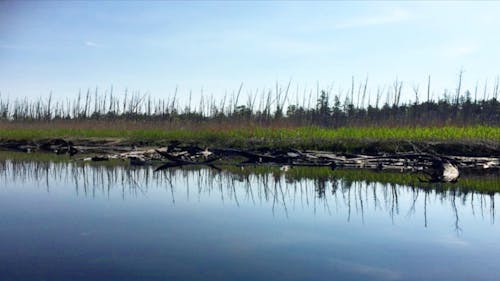Rutgers researchers find expansion of 'ghost forests' caused by climate change

A Rutgers report found an expansion of “ghost forests” filled with dead trees across the Northeast U.S. coast due to various effects of climate change. Rachael Sacatelli, the lead author of the study and geographic information systems coordinator at the Center for Remote Sensing and Spatial Analysis, discussed this phenomenon and the most likely factors behind it.
This report synthesized current research and knowledge on the effects of sea-level rise on coastal forests, she said. The researchers found that many studies reported large losses of coastal forests by saltwater wetlands.
“These areas of habitat loss have been coined ‘ghost forests’ because some of the dead tree trunks remain standing in an area that is no longer a forest habitat,” Sacatelli said. “It truly does look like you are seeing the ghosts of trees in a forest that once was.”
She said these trees are dying from a combination of factors they and other scientists are only just beginning to understand. These factors likely include more frequent storm surges, changes in groundwater salinity and height and other location-based issues.
These groundwater changes are linked to rising sea levels, Sacatelli said. While it is often the approximately 8-inch rise in average global sea levels that receives attention in climate change discussions, she said it is important to remember that regional changes vary widely across U.S. coasts.
“During the last glacial period where the land ice extended well into areas of New Jersey and Connecticut, the weight of that ice caused the land surface adjacent to that ice to rise,” she said. “Now that the ice is gone, the land surface is still sinking back to equilibrium … that means that the land surface in the mid-Atlantic is sinking, making the already rising sea level inundate land surfaces faster than in other regions.”
Sea-level rise is changing major ecosystems along the coasts by causing tidal water to increasingly occupy shoreline areas and saltwater wetlands, which in turn alters coastal land habitats such as forests, Sacatelli said.
“As the tides start to move farther and farther inland, the shoreline areas are being completely flooded (and) eroding away with the increased water inundating that area,” she said. “These changing conditions alter this more inland habitat so much that the plants occupying those areas can no longer survive there, causing habitat shifts that can lead to decreasing resources for the animals that live within or around those habitats.”
Sacatelli said it is important to help preserve coastal forests due to how intricately linked they are to the rest of their ecosystem and the food chains people rely on. While dying trees and plants can maintain their habitats by sending out their seeds to land in areas further inland, human infrastructure often blocks these habitats from migrating as far as needed, she said.
“One of the things we can do to help … is preserving areas of land adjacent to coastal forests that have not yet been developed,” Sacatelli said. “While it is uncertain if our future coastal forest habitat will cover the exact number of acres as we have today, making sure we leave unimpeded paths for coastal forests to migrate to as things continue to change can decrease the amount of habitat lost and therefore decrease the impact that loss has on the coastal ecosystem as a whole.”



